The Best Benchmarks for Every Asset Class
The Best Benchmarks for Every Asset Class (Literally All of Them)
Benchmarking your portfolio performance is crucial for a couple of reasons. First, it provides a starting point for your financial advisor/portfolio manager to gage your risk-tolerance and return expectations. Second and more importantly, it gives you a basis of comparison for your portfolio performance against the rest of the investable market.
Benchmarks come in all different shapes and sizes, with some tracking certain segments of the stock market like the S&P 500 Index to others tracking entire asset classes. With so many available indexes to benchmark your portfolio against, the question then becomes which ones to use.
We believe that the best benchmarks are the most simplistic, as they provide a basis to compare every strategic investment choice you make. In addition, we think that every portfolio should hold an individual benchmark for every asset class it holds, considering it will be easier to evaluate the value added by your financial advisor/money manager in each of these investment categories. Exclusively using the S&P 500 Index, which is a good gage of the performance of theUS stock market, would not be a strong measure of how a diversified, multi-asset portfolio looks in terms of risk and return.
Benchmarking Equity Investments
For stocks, we recommend that you use the MSCI ACWI All Cap Total Return Index because it covers the entire global stock market. In addition, it is the most simple, diversified equity fund one could invest in. Every deviation from this index (like investing more in US companies than foreign ones) is a conscious choice made by the manager of the portfolio and those decisions can result in differing returns. Those returns can be most accurately interpreted through a broad stock market index. The FTSE Global All Cap Total Return is another global equity index that we believe has the breadth necessary to be an accurate gage of how your stock holdings performs relative to the market.
Benchmarking Fixed-Income Investments
For bonds, we suggest using the Citigroup 1-month Treasury Bill index for slightly different reasons. Since bond allocations are usually meant to lower risk in a portfolio, the safest and least volatile bond investments are what you should compare your fixed-income returns against. A 1-month Treasury Bill is considered the shortest and safest bond investment that a portfolio manager could utilize and any choice made to increase duration and risk on the bond side would show up in the returns of your portfolio compared to this benchmark. In this case, instead of benchmarking against the broadest available bond index, you should benchmark it against the intentions of entering into the asset class. This means choosing a benchmark that is aligned with safety and security.
What About Other Asset Classes?
With ETFs allowing investors to unlock previously hard-to-reach asset classes, it has become increasingly necessary to add new benchmarks to these innovative portfolios that cover more than just your typical stock and bond model. Popular new investment options in commodities, real estate, currencies, private equity and hedge funds (considered to be alternative asset classes) are frequently showing up in retail investor portfolios, yet many still use stock and bond indexes to track their entire investment performance. Allocations to these alternative asset classes should be treated just like investments in stocks and bonds and thus should be evaluated with appropriate benchmarks. In order to more accurately gage returns in these segments of multi-asset portfolios we will look at some potential indexes for these new investment options that are in line with the simplistic benchmarking approach.
Alternative Asset Class Benchmarks:
Commodities: S&P GSCI Total Return Index
- Considered one of the broadest commodity indexes to date, the S&P GSCI is a production-weighted index, designed to reflect the relative significance of each commodity to the world economy.
- By over-emphasizing commodities that are produced more it is a better gage of their value in the market place, similar to market-cap weighted indexes in the equity space. This means it is more representative of the entire commodity market relative to similar indexes.
- It holds all available futures contracts relating to physical commodities such as oil, wheat, corn, aluminum, live cattle, and gold.
Real Estate: FTSE EPRA/NAREIT Global REIT Total Return Index
- This very popular global real estate index is used as the tracking index for 50% of globally diversified real estate sector equity funds.
- The index spans the entire commercial real estate sector of the global economy. Includes listed real estate stocks and REITs from all relevant investment and property sectors.
- It is not a US specific index, which is important because most real estate indexes exclusively track US real estate investments and that is not in line with the simplistic benchmarking approach.
Currency: Barclay Currency Traders Index
- Because foreign exchange trading is a zero-sum gain, meaning any gain in one currency reduces the value of another, using a benchmark that evaluates the return of a broad-basket of currencies would not be a good point of reference for average returns in currency markets.
- Instead, a guideline that measures the average returns of currency traders around the world would be more representative of currency market performance, which is exactly what Barclay Currency Traders does.
- The index is an equal weighted composite of managed programs that trade currency futures and/or cash forwards in the inter-bank market. As of 2017 there are 58 currency programs included in the index from across the globe.
- Note that those holding this asset class simply as a hedge for other investments (known as a currency-hedge) in their portfolio would not want to use this benchmark as it would not be representative of the returns of their currency position. Instead you would group it with the returns of whatever asset class you are currency-hedging.
Private Equity: Red Rocks Globally Listed Private Equity Total Return Index
- This is a market-cap weighted index holding between 40-75 global publicly listed private equity firms as a means of diversified exposure to the entire asset class.
- The publicly traded stocks within the index include a diverse set of institutions whose primary purpose is to invest in or lend capital to privately held companies ranging from venture capital funds to special purpose acquisition corporations.
- The ‘stage of investment’ allocations are meant to mirror the average large institutional private equity portfolio with firm distribution being 65% late stage investors, 25% mid stage investors, and 10% early stage investors.
Hedge Funds: HFRX Global Hedge Fund Index
- This index is weighted based on the popularity of each hedge fund strategy within the global market. Similar to the other indexes we have discussed so far, this weighting system makes the benchmark very representative of what the real hedge fund market looks like.
- It is built to represent the overall composition of the hedge fund universe; this index is comprised of all eligible hedge fund strategies.
- Strategies include but are not limited to convertible arbitrage, merger arbitrage, distressed securities, event driven and equity market neutral.
These Aren’t the Only Asset Classes
These are not the only asset classes that ETFs have unlocked for the retail investor (such as investment opportunities in rare whiskey with the ETF (WSKY) which could be benchmarked against the broad Whisky Apex 1000 index). There are also many other alternative classes that some institutional and high-net worth investors have access to but ETFs have yet to track. These include but are not limited to collector’s items such as automobiles, stamps, and coins as well as private investment opportunities in the real estate space. Even though these investment categories do not yet have an ETF tracking them, there are broad indexes that investors should use to gage performance in these asset classes.
Bottom Line
As the financial world continues to innovate and create new products that give retail investors more power to diversify into new asset classes, your portfolio needs innovate and adapt as well. Without the use of these all-encompassing, intention-driven benchmarks, evaluating risk and return in multi-asset portfolios becomes increasingly difficult. By assigning a simplistic and broad benchmark to each asset class, you can more accurately measure the true effect that strategic investment decisions have on your portfolio.
By: Quentin McTeer – Intern Research Analyst
Index Links:
Commodities: http://www.spindices.com/documents/methodologies/methodology-sp-gsci.pdf
Real Estate: http://us.spindices.com/documents/methodologies/methodology-dj-select-real-estate-securities.pdf
Currency: http://www.barclayhedge.com/research/indices/cta/sub/curr.html
Private Equity: http://www.alpsredrocks.com/glpe-index.php?section=returns
Hedge Funds: http://www.hedgefundresearch.com/hfrx-index-methodology
Click here to schedule a consultation with one of our financial planners.
Listen to Our Podcast:
Download our free guide: “Your Pre-Retirement Checklist”
Have more questions? Contact Us
Share This Story, Choose Your Platform!
Wiser Wealth Management, Inc (“Wiser Wealth”) is a registered investment adviser with the U.S. Securities and Exchange Commission (SEC). As a registered investment adviser, Wiser Wealth and its employees are subject to various rules, filings, and requirements. You can visit the SEC’s website here to obtain further information on our firm or investment adviser’s registration.
Wiser Wealth’s website provides general information regarding our business along with access to additional investment related information, various financial calculators, and external / third party links. Material presented on this website is believed to be from reliable sources and is meant for informational purposes only. Wiser Wealth does not endorse or accept responsibility for the content of any third-party website and is not affiliated with any third-party website or social media page. Wiser Wealth does not expressly or implicitly adopt or endorse any of the expressions, opinions or content posted by third party websites or on social media pages. While Wiser Wealth uses reasonable efforts to obtain information from sources it believes to be reliable, we make no representation that the information or opinions contained in our publications are accurate, reliable, or complete.
To the extent that you utilize any financial calculators or links in our website, you acknowledge and understand that the information provided to you should not be construed as personal investment advice from Wiser Wealth or any of its investment professionals. Advice provided by Wiser Wealth is given only within the context of our contractual agreement with the client. Wiser Wealth does not offer legal, accounting or tax advice. Consult your own attorney, accountant, and other professionals for these services.





